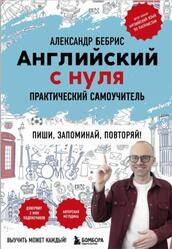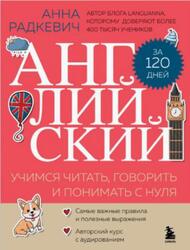A New English Grammar, American edition, Rossiter А., 2021.
A New English Grammar was originally published under the title A Descriptive Grammar of English, an international English edition describing the grammar of British English. This new edition gives priority to American English in the rare cases where it differs from British English.
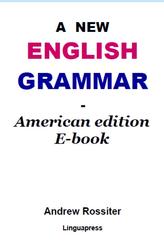
Tense, aspect, voice.
According to conventional modern linguistics, there are only two tenses in English, the present and the past. Other "tenses" are verb forms created with the help of auxiliaries and modals. As well as being a rather artificial construct, this can be very confusing for students.
Thus, for the purpose of clarity, it is more useful to use the historic classification of tenses in English, as defined by - among others – the first grammarian of English, Samuel Johnson. Johnson listed six English tenses, each of them with a simple and a progressive or continuous aspect.
Contents.
1. Verbs.
1.1. Verbs: What are verbs?.
1.1.1. Verbs in the sentence 1.1.2. Different types of verb 1.1.3. Tense, aspect, voice 1.1.4. Modality 1.1.5. Moods 1.1.6 The subjunctive.
1.2. Verbs: Present tenses.
1.2.1. Different types of present tense 1.2.2. The simple present 1.2.3. The present progressive.
1.3. Verbs: Expressing the future.
1.3.1. Forms of the future 1.3.2. The present tense used as a future tense 1.3.3. Will and going to 1.3.4. Shall 1.3.5. Negative forms 1.3.6. Other forms of the future.
1.4. Verbs: Expressing the past.
1.4.1. Forms of past tenses 1.4.2. The Simple past 1.4.3. The present perfect 1.4.4. The past perfect 1.4.6. The future perfect.
1.5. Verbs: Conditional structures with if or unless.
1.5.1. Conditional clauses 1.5.2. Open if clauses 1.5.3. The open hypothesis 1.5.4. The unfulfilled hypothesis 1.5.5. Omission of if 1.5.6. Whether.
1.6. Verbs: The infinitive.
1.6.1. Short infinitives 1.6.2. Full infinitives with to 1.6.3. Past infinitives 1.6.4. Passive infinitives 1.6.5. Infinitive or gerund? 1.6.6. Other points 1.6.7. Split infinitives.
1.7. Verbs: The imperative.
1.7.1. Uses of the imperative 1.7.2. Forms of the imperative, soft imperatives 1.7.3. Emphatic imperatives.
1.8. Verbs: Active and passive.
1.8.1 Usage 1.8.2. The passive for emphasis 1.8.3. The passive for impersonal statements 1.8.4. The passive to simplify sentence structure 1.8.5. Forms of the passive 1.8.6. The passive followed by an object.
1.9. Verbs: Gerunds and -ing forms.
1.9.1. Different types of word ending in -ing 1.9.2. Gerunds 1.9.3. Verbal nouns 1.9.4. Areas of confusion 1.9.5. Present participles 1.9.6. -ing forms in passive structures.
1.10. Consecutive verbs -ing or an infinitive.
1.10.1. Gerund or infinitive?.
1.11. To be : Forms of to be 1.11.1. Functions – main verb.
1.11.2. Functions – auxiliary verb 1.11.3. Passive forms with be 1.11.4. Progressive tenses in the passive 1.11.5. Get used in place of be 1.11.6. Avoid confusion 1.11.7. To be as a modal verb.
1.12. To have.
1.12.1. Have as a main verb, - forms, abbreviated forms, negative forms 1.12.2. Have or have got ? 1.12.3. Have as an auxiliary verb – forms, contracted forms and negative forms.
1.13. Do and make : uses and differences.
1.13.1. Meanings 1.13.2 Do – uses and expressions 1.13.3 Make - functions and usage.
1.14. Get and got :
1.14.1. Forms of get 1.14.1. Get as a main verb 1.14.2. Phrasal and prepositional uses 1.14.3. Get as passive auxiliary.
1.15. Modal verbs of obligation - must, should, ought to.
1.15.1. Firm obligation, must & have to 1.15.2. Recommendation or moral obligation – should & ought to.
1.16 Modal verbs of ability - can, may and might.
1.16.1. Open possibility can & be able to 1.16.2. Potential possibility, authority – may & might.
1.17. Verbs of enabling & obligation - allow, let, prevent etc.
1.17.1. Obligation and authority 1.17.2. Prevention 1.17.3. Causative verbs let make have.
1.18. Phrasal & prepositional verbs How to distinguish between them.
1.18.1. Separable or inseparable? 1.18.2. Transitive verbs 1.18.3. Intransitive verbs 1.18.4. Special cases & exceptions.
1.19. Irregular verbs General principles.
2. The Noun phrase.
2.1. Nouns : What is a noun?.
2.1.1. Classification of nouns 2.1.2. Nouns and gender 2.1.3. The formation of nouns 2.1.4. Nouns in the plural 2.1.5. Collective nouns.
2.2. Noun phrases Types of noun phrase.
2.2.1 Composition 2.2.2. Modifiers in noun phrases 2.2.3. Exceptions.
2.3. Count and non-count nouns.
2.3.1. Count nouns 2.3.2. Non-count nouns 2.3.3. Usage 2.3.4. Nouns that can be countable or uncountable 2.3.5. Quantifiers with count & non-count nouns.
2.4. Pronouns 1: Definition.
2.4.1. Personal pronouns, including one, reflexive pronouns, emphatic pronouns, indefinite pronouns, gender-neutral pronouns, and there as a pronoun.
2.4.2. Pronouns 2: Relative pronouns and adjectives functions and forms, Nominal relative pronouns, Relative adjectives, why, when & how 2.4.3. Relative adverb - however.
2.4.4 Pronouns 3: Demonstrative pronouns this that these those.
2.5. Articles.
2.5.1. Usage 2.5.2. The definite article the 2.5.3. Indefinite articles a an2.5.4. Is an article necessary? 2.5.5. Articles & quantifiers.
2.6. Quantifiers Definition.
2.6.1. some, any, no & their compounds 2.6.2. Large quantity quantifiers Much, many lots of etc. 2.6.3. Small quantity quantifiers – few, a few, little etc. 2.6.4. Neutral and relative quantity quantifiers - some, each, all, whole most etc. 2.6.5. Quantifiers followed by of.
2.7. Numbers and counting 2.7.1. Cardinal numbers.
2.7.2. Ordinals.
2.7.3. Fractions and decimals.
2.8. Possession Using of or ’s.
2.8.1. Animates, human possessors 2.8.2. Inanimate possessors.
2.9. Adjectives in English, Definition.
2.9.1. Determining adjectives 2.9.2. Descriptive adjectives, qualifying or classifying 2.9.3. Usage – attributive or predicative 2.9.4. Plural adjectives 2.9.5. The formation of adjectives 2.9.6. Comparison of adjectives 2.9.7. The gradation of adjectives 2.9.8. Adjective order.
3. Other parts of speech.
3.1. Adverbs in English.
3.1.1. Two families of adverb 3.1.2. Adverbs related to adjectives 3.1.3. Adverbs unrelated to adjectives 3.1.4. Sentence adverbs.
3.2. Prepositions Definition.
3.2.1. Prepositions of position & direction 3.2.2. Prepositions of time 3.2.3. Manner & other relations 3.2.4 Other prepositions 3.2.5. End a sentence with a preposition.
3.3. Conjunctions and connectors. Definition.
3.3.1. Coordinating conjunctions but and nor yet or 3.3.1.2. Starting a sentence with a conjunction 3.3.2. Subordinating conjunctions 3.3.3. Examples 3.3.4. So as a coordinating conjunction 3.3.5. Correlating coordinators (both… and, either… or etc).
3.4. Conjunctive adverbs such as however or therefore 3.4.1. Definition – the nature of conjunctive adverbs 3.4.2. Usage.
4. Sentences and clauses.
4.1. Word order in statements.
4.1.1. Subject verb and direct object 4.1.2. Other elements including indirect objects and adverb phrases 4.1.3. Complex or compound sentences.
4.2. Word order in questions Essential question structure.
4.2.1. Question words or wh-words 4.2.2. Questions with single word verbs 4.2.3. Exceptions.
4.3. Reported questions Reported questions and verb tenses.
4.3.1. Reporting the present – simultaneous reporting 4.3.2. Reporting the past – deferred reporting 4.3.3. Absolute and relative adverbs of time and place.
4.4. Tag questions
4.4.1. Definitions and functions 4.4.2. Structure of tag questions 4.4.3. Formation and use of tags. 4.4.4. Alternative forms of negative tags.
4.5. Negative structures Different ways of expressing negation in English.
4.5.1. Negative forms of the verb 4.5.2. Negating with a quantifier 4.5.3. Negation using a noun or pronoun 4.5.4. Negation using an adverb or adverb phrase 4.5.5. neither… nor – linking negative elements 4.5.6. Negation using negative adjectives 4.5.7. Negation and tag questions.
4.6. Relative clauses Forms and functions.
4.6.1. The relative pronoun as subject 4.6.2. The relative pronoun as object 4.6.4. Relative clauses starting with a preposition 4.6.5. More complex structures 4.6.6. Restrictive and non-restrictive relative clauses 4.6.7. Using that instead of who or which4.6.8 Relative clauses qualifying a whole sentence 4.6.9. Omission of the relative pronoun.
4.7. Punctuation.
4.8. Language and style.
5. Glossary o f essential grammar terms.
Note: Use of color in this book.
Бесплатно скачать электронную книгу в удобном формате, смотреть и читать:
Скачать книгу A New English Grammar, American edition, Rossiter А., 2021 - fileskachat.com, быстрое и бесплатное скачивание.
Скачать pdf
Ниже можно купить эту книгу, если она есть в продаже, и похожие книги по лучшей цене со скидкой с доставкой по всей России.Купить книги
Скачать - pdf - Яндекс.Диск.
Дата публикации:
Теги: учебник по английскому языку :: английский язык :: Rossiter
Смотрите также учебники, книги и учебные материалы:
Следующие учебники и книги:
 Англійская мова, 9 клас, Лапіцкая Л.М., 2018 — Фрагмент из книги: Most people think that a perfect family is the one with many children and I absolutely agree. … Книги по английскому языку
Англійская мова, 9 клас, Лапіцкая Л.М., 2018 — Фрагмент из книги: Most people think that a perfect family is the one with many children and I absolutely agree. … Книги по английскому языку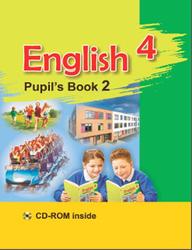 Англійская мова, 4 клас, Частка 2, Лапіцкая Л.М., 2019 — Фрагмент из книги: Read about the pets. What are their names? 1. My pet is brown and white. He’s got … Книги по английскому языку
Англійская мова, 4 клас, Частка 2, Лапіцкая Л.М., 2019 — Фрагмент из книги: Read about the pets. What are their names? 1. My pet is brown and white. He’s got … Книги по английскому языку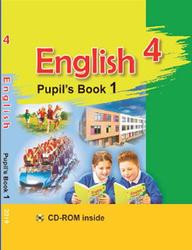 Англійская мова, 4 клас, Частка 1, Лапіцкая Л.М., 2019 — Фрагмент из книги: Twinky speaks about the children. Correct the mistakes. Model. 1. Pat hasn’t got long hair. She’s got … Книги по английскому языку
Англійская мова, 4 клас, Частка 1, Лапіцкая Л.М., 2019 — Фрагмент из книги: Twinky speaks about the children. Correct the mistakes. Model. 1. Pat hasn’t got long hair. She’s got … Книги по английскому языку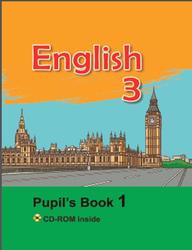 Англійская мова, 3 клас, часть 1, Лапіцкая Л.М., 2018 — Фрагмент из книги: Read and say the number of the pet. A. It’s brown. It’s got long ears and a … Книги по английскому языку
Англійская мова, 3 клас, часть 1, Лапіцкая Л.М., 2018 — Фрагмент из книги: Read and say the number of the pet. A. It’s brown. It’s got long ears and a … Книги по английскому языку
Предыдущие статьи:
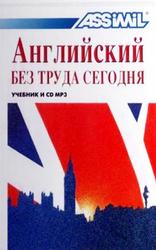 Assimil, Английский без труда сегодня, учебник и CD MP3 — Вы хотите быстро и легко выучить современный, полезный, живой английский. Это издание методики английского языка - как раз то, что … Книги по английскому языку
Assimil, Английский без труда сегодня, учебник и CD MP3 — Вы хотите быстро и легко выучить современный, полезный, живой английский. Это издание методики английского языка - как раз то, что … Книги по английскому языку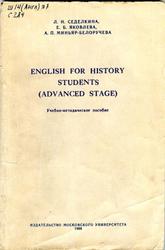 English for history students, Advanced stage, Седелкина Л.Н., Яковлева Е.Б., Миньяр-Белоручева А.П., 1988 — Фрагмент из книги: Britain has been many centuries in the making. The Romans conquered most of Britain, but were unable … Книги по английскому языку
English for history students, Advanced stage, Седелкина Л.Н., Яковлева Е.Б., Миньяр-Белоручева А.П., 1988 — Фрагмент из книги: Britain has been many centuries in the making. The Romans conquered most of Britain, but were unable … Книги по английскому языку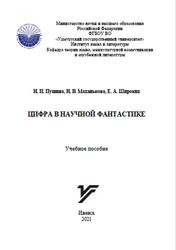 Цифра в научной фантастике, Путина Н.И., Маханькова Н.В., Широких Е.А., 2021 — В пособии представлены тексты (научные, публицистические, художественные) по проблемам цифровизации, цифровых технологий, взаимодействия человека с достижениями научной и технической мысли … Книги по английскому языку
Цифра в научной фантастике, Путина Н.И., Маханькова Н.В., Широких Е.А., 2021 — В пособии представлены тексты (научные, публицистические, художественные) по проблемам цифровизации, цифровых технологий, взаимодействия человека с достижениями научной и технической мысли … Книги по английскому языку Английский язык, 3 класс, в 2 частях, часть 1, Лапицкая Л.М., 2018 — 3. Find coloured letters and numbers in your classroom, and name them. Найди цветные буквы и цифры в своём классе … Книги по английскому языку
Английский язык, 3 класс, в 2 частях, часть 1, Лапицкая Л.М., 2018 — 3. Find coloured letters and numbers in your classroom, and name them. Найди цветные буквы и цифры в своём классе … Книги по английскому языку


